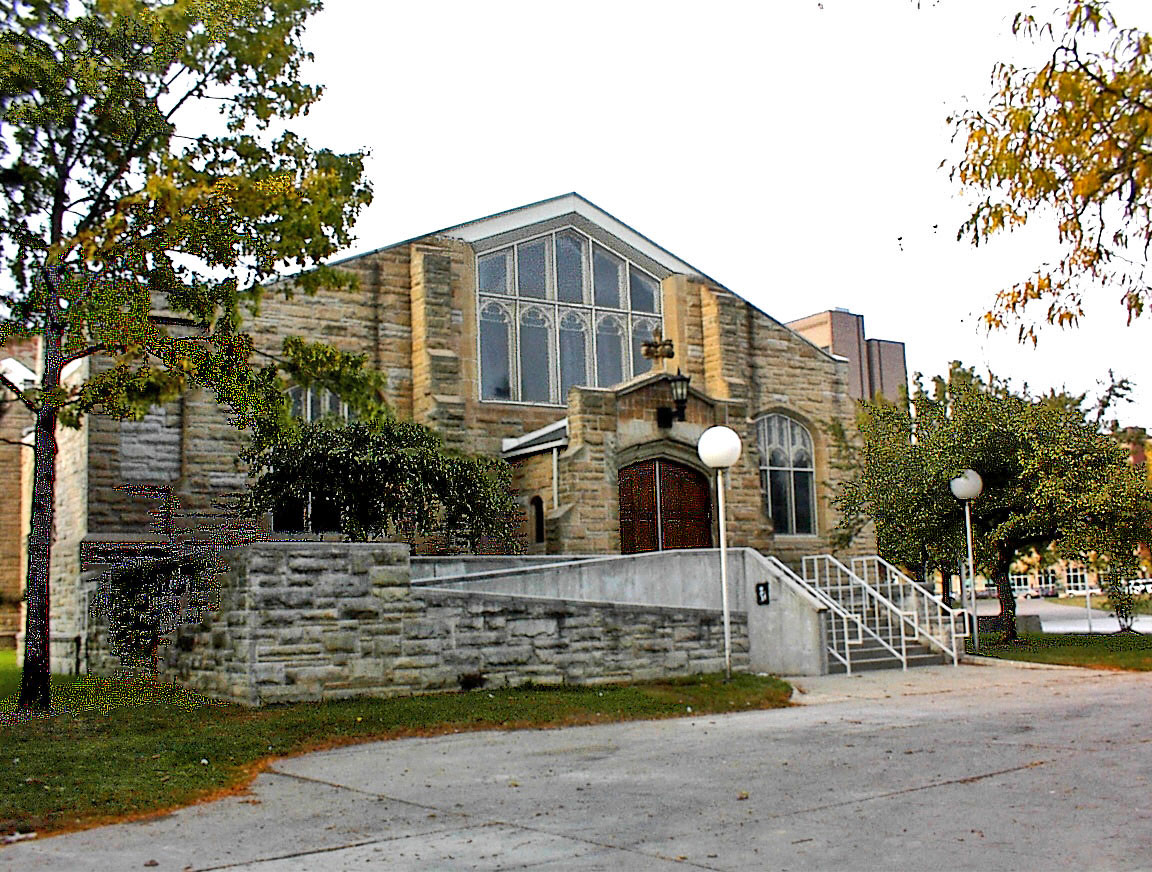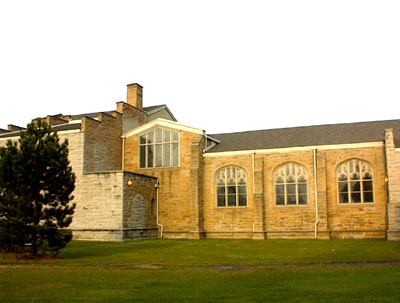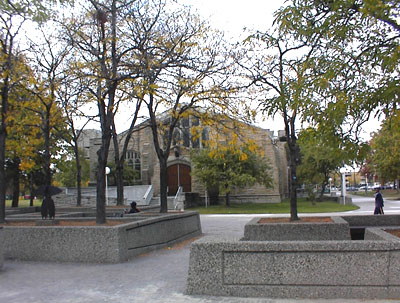

Boston architect, Ralph Adam Cram, carefully studied Gothic
architecture, wrote extensively about it and then popularized the Gothic style
for this nation’s churches. Residents of Detroit are fortunate to be able
to readily view three examples of Cram’s creativity: the Cathedral
of St. Paul at East Warren and Woodward; St. Florian’s Church in Hamtramck
and the church you see pictured on this page.
on this page.
St. Andrew’s was Cram’s first commission outside the state of Massachusetts. For this modest but striking church, he selected the Perpendicular Gothic style. This was the third and final phase of English Gothic architecture and was popular from the late Fourteenth Century until the early Sixteenth Century.
Perpendicular Gothic incorporated strong vertical
lines, especially in wall panels and in the window tracery. You may observe
this in the massive
window behind the altar in St. Andrews, a window that must be exceptionally
attractive when the early evening summer sun shines through it. Roof vaulting
in Perpendicular Gothic is more ornate than in early phases, and flying buttresses
attained their most graceful and decorative form in the Perpendicular Gothic
era.
Because of advances in the design of arches, windows in Perpendicular Gothic
church are especially large and walls relative small. This gave architects
more
opportunities to work in impressive tracery. Another engineering advanced informed
improved joining of beams and a better u nderstanding
of how roofs could be supported.
This led hammerbeam roofs that effectively distributed the weight of the arched
roof onto the supporting timbers. Among the most lucid examples of original
Perpendicular Gothic structure are Westminster Hall in London; the Henry
VII
Chapel in Westminster Cathedral and King’s College Chapel at Cambridge.
nderstanding
of how roofs could be supported.
This led hammerbeam roofs that effectively distributed the weight of the arched
roof onto the supporting timbers. Among the most lucid examples of original
Perpendicular Gothic structure are Westminster Hall in London; the Henry
VII
Chapel in Westminster Cathedral and King’s College Chapel at Cambridge.
St. Andrew’s Parish was founded as an
Episcopalian Sunday school on April 8, 1885, and original met in the front
room of a home on Merrick
Avenue. By January of 1886, the parish had erected a church at Fourth and Putnam.
As the Episcopalian population in this neighborhood of Detroit grew and prospered,
the parish had the resources to construct a truly beautiful, if small, church,
the Ralph Adam Cram’s structure that you see. This was one of the first
churches established in this area of Detroit. On Tuesday of Holy Week in
1906,
the church burned because of an electrical fire. Some six years later, the
church
 was
restored. As Detroit’s Cultural Center and Wayne
State expanded after
World War II, the Episcopalian population moved away. In 1961, the dioceses
leased this church to Wayne State for 99 years. The University uses it as a
student chapel and a concert hall.
was
restored. As Detroit’s Cultural Center and Wayne
State expanded after
World War II, the Episcopalian population moved away. In 1961, the dioceses
leased this church to Wayne State for 99 years. The University uses it as a
student chapel and a concert hall.
Architect: Ralph Adam Cram of Cram, Wentworth and Goodhue
Architectural Style: Perpendicular Gothic
Materials: Bedford limestone with Berea Sandstone trims
Date of Completion: 1902
Use in 2004: Chapel and concert hall for Wayne State University
City of Detroit Local Historic District: Not listed
State of Michigan Registry of Historic Places: P 25218; Listed April 24, 1981
National Register of Historic Places: Listed May 1, 1986
Photograph: Ren Farley; October, 2004